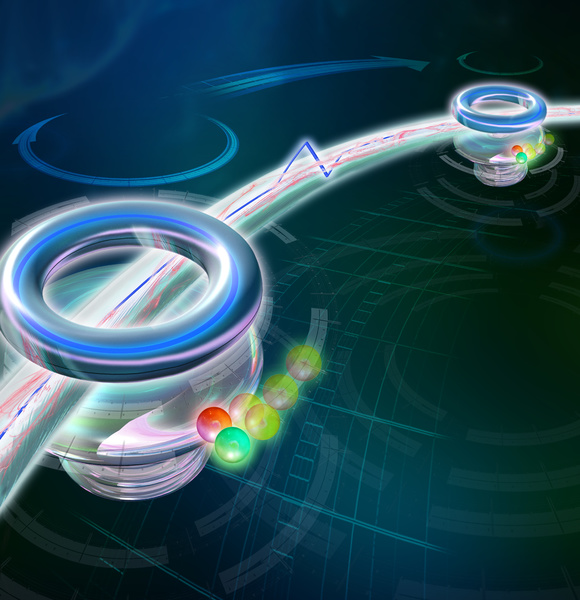|
scientists at the university of innsbruck and tu wien (vienna) in austria developed a new quantum communication protocol intended to secure the transfer of information between quantum systems even under the contamination of thermal noise by adding a quantum oscillator at both ends of the quantum channel.

even in the presence of noise, quantum information transfer is possible with a few special tricks. (tu wien)
according to an article on the tu wien website, quantum communications have been hampered by the loss of photons over great distances and by thermal noise, caused by brownian motion, over the quantum channel. recently, superconducting qubits, tiny circuits that can assume two different states at the same time, have been incorporated to advance that technology.
“contrary to conventional light switches that can be either turned on or turned off, the laws of quantum physics allow a qubit to assume any combination of these states, which is called quantum superposition,” the article continued. “to transfer this quantum state from one superconducting qubit to another requires microwave photons, which are already used for classic signal transfer.
“reliably transferring quantum information via a microwave regime has been considered impossible as the constant thermal noise completely superposes the weaker quantum signal.”
the researchers, who also worked with teams at harvard university and yale university in the u.s., dealt with this issue by adding a microwave oscillator at both ends of the channel that couples the qubits instead of having the qubits coupled directly to the microwave channel or waveguide.
“we cannot prevent the thermal noise that develops in the quantum channel,” says benoit vermersch, one of the researchers from the university of innsbruck.
“what is important is that this noise affects both oscillators on both ends in the same way. therefore, we are able to exactly separate the detrimental effect of the noise from the weaker quantum signal through precise coupling to the waveguide.”
the scientists were able to couple qubits over several hundred meters by using this method. cooling the channels remains a long-term issue, but the researchers believe that it is now feasible to connect buildings or cities “in a quantum physical manner via microwave channels.”
the research was recently published in physical review x and in physical review letters. the first abstract stated:
“communication over proven-secure quantum channels is potentially one of the most wide-ranging applications of currently developed quantum technologies. it is generally envisioned that in future quantum networks, separated nodes containing stationary solid-state or atomic qubits are connected via the exchange of optical photons over large distances.
“in this work, we explore an intriguing alternative for quantum communication via all-microwave networks. to make this possible, we describe a general protocol for sending quantum states through thermal channels, even when the number of thermal photons in the channel is much larger than 1. the protocol can be implemented with state-of-the-art superconducting circuits and enables the transfer of quantum states over distances of about 100 m via microwave transmission lines cooled to only t=4 k.
“this opens up new possibilities for quantum communication within and across buildings and, consequently, for the implementation of intracity quantum networks based on microwave technology only.”
the second abstract read:
“we describe a quantum state transfer protocol, where a quantum state of photons stored in a first cavity can be faithfully transferred to a second distant cavity via an infinite 1d waveguide, while being immune to arbitrary noise (e.g., thermal noise) injected into the waveguide.
“we extend the model and protocol to a cavity qed setup, where atomic ensembles, or single atoms representing quantum memory, are coupled to a cavity mode. we present a detailed study of sensitivity to imperfections, and apply a quantum error correction protocol to account for random losses (or additions) of photons in the waveguide.
“our numerical analysis is enabled by matrix product state techniques to simulate the complete quantum circuit, which we generalize to include thermal input fields. our discussion applies both to photonic and phononic quantum networks.”
|